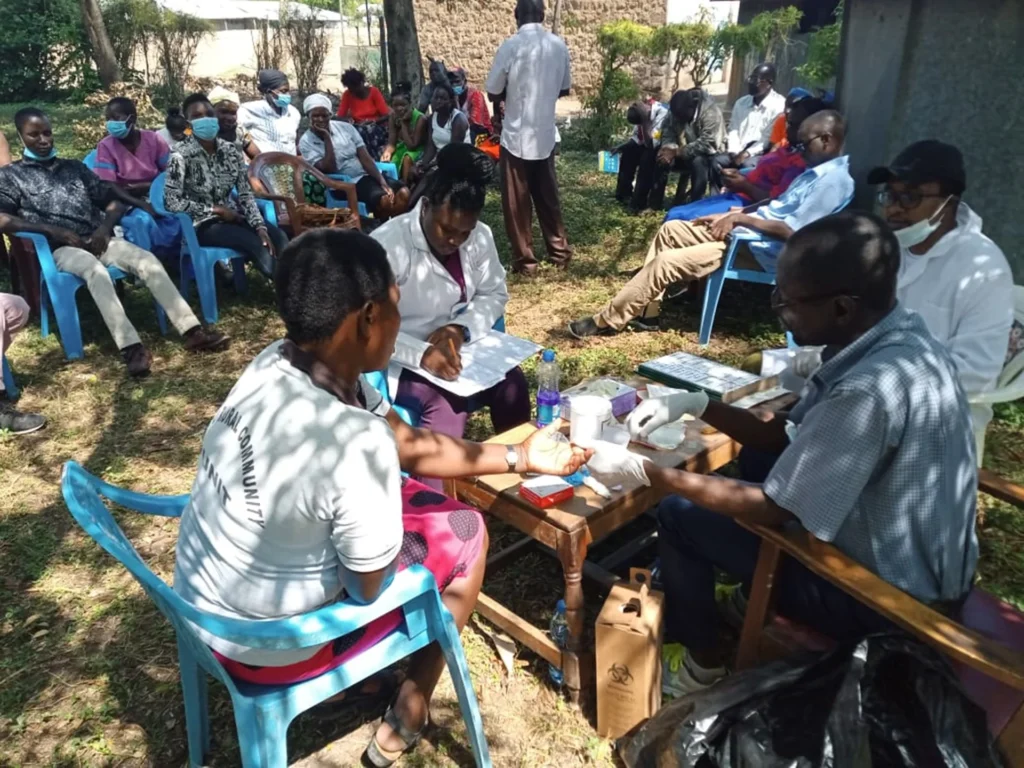
Imagine a life free from the constant fear of a deadly disease carried by a tiny insect. For communities across Kenya, that dream is now a reality. The country has eliminated sleeping sickness (HAT), bringing hope and a healthier, brighter future for current and future generations.
The World Health Organization (WHO) has validated Kenya as having eliminated human African trypanosomiasis (HAT) or sleeping sickness as a public health problem, making it the tenth country to reach this important milestone. Kenya has eliminated HAT as its second neglected tropical disease (NTD).
What is Sleeping Sickness ?
African trypanosomiasis (HAT) occurs when the blood parasite Trypanosoma brucei infects humans, spreading through vectors.
Tsetse flies transmit it to humans after acquiring parasites from infected people or animals through their bites. Rural populations dependent on agriculture, fishing, animal husbandry or hunting are most at risk of exposure. In the first stage, starting one to three weeks after a bite, the disease causes fevers, headaches, itching, and joint pain. Weeks to months later, the second stage brings confusion, poor coordination, numbness, and trouble sleeping. Doctors diagnose the disease by detecting the parasite in a blood smear or lymph node fluid.

Kenya’s Journey to HAT Elimination
As the name indicates, HAT is transmitted only on the African continent. The disease exists in two forms, gambiense and rhodesiense. The rhodesiense form (r-HAT), which is found in eastern and southern Africa, is the only one present in Kenya.
The first cases of HAT in Kenya were detected in the early 20th century. Since then, Kenya has engaged in consistent control activities, without indigenous new cases reported for over 10 years. The last autochthonous case was detected in 2009, and the last two exported cases, infected in the Masai Mara National Reserve, were detected in 2012.
Recently, Kenya strengthened HAT surveillance in 12 health facilities in six historically endemic counties to act as sentinel sites. The program equipped them with diagnostic tools and trained their clinical personnel on diagnostic procedures, including the most sensitive and practical r-HAT tests.
The country also actively monitors the control and surveillance of tsetse flies and animal trypanosomiasis, both within and beyond the historical HAT endemic areas, supported by the national veterinary health authorities and the Kenya Tsetse and Trypanosomiasis Eradication Council (KENTTEC).
Impact on Affected Communities in Kenya
Eliminating sleeping sickness (Human African Trypanosomiasis) in Kenya has brought about significant positive impacts on affected communities, including increased productivity, improved health, and renewed economic growth. Kenya’s success, as the 10th African nation to eliminate the disease as a public health concern, underscores the importance of sustained efforts and partnerships in combating neglected tropical diseases.
Kenya’s elimination of sleeping sickness has boosted rural productivity, improved health through safer oral treatments and screening, and attracted investments. Families save on treatment costs, children attend school more often, and reduced disease has eased healthcare burdens. WHO praises this as a model for fighting neglected tropical diseases and urges continued monitoring to prevent recurrence.
Challenges and Lessons Learned from Kenya
Kenya’s journey to eliminate sleeping sickness, officially known as human African trypanosomiasis (HAT), involved overcoming several challenges, including the COVID-19 pandemic’s disruption of control programs, the need for robust surveillance systems, and the complexities of managing a disease transmitted by tsetse flies. The country also faced issues related to drug resistance and the need for innovative diagnostic and treatment strategies.
WHO’s Role and Global Goals
Dr. Patrick Amoth, EBS, Director General of Health, said the milestone reflects years of collaboration among governments, institutions, partners, and communities. He emphasized it showcases Kenya’s sustained commitment to eliminating sleeping sickness.
Also said , the country remains fully committed to sustain the quality of care and surveillance in line with WHO’s recommendations.
Supported by WHO and partners, including FIND, Kenya’s HAT program will implement post-validation surveillance to detect possible disease resurgence or reintroduction. WHO continues to support ongoing monitoring in previously affected areas and maintains a stock of medicines to ensure rapid treatment of possible future cases, thanks to donations from Bayer AG and Sanofi.
Dr. Abdourahmane Diallo said the success reflects the Ministry’s leadership, health workers’ dedication in at-risk areas, and key partners’ support. WHO is proud to have contributed to this achievement and encourages all stakeholders to remain involved in post-validation monitoring.
Kenya’s journey reveals that eliminating sleeping sickness demands more than just medicine; it demands unwavering resolve and adaptive strategies. Reaching the last mile is never easy, but their experience proves that success is possible with the right combination of community ownership, innovative approaches, and a steadfast commitment to leaving no one behind.
For more such informative articles stay tuned at The World Times.



